Part 4: Planting design
| Site: | OpenLearn Create |
| Course: | Garden and planting design |
| Book: | Part 4: Planting design |
| Printed by: | Guest user |
| Date: | Tuesday, 25 November 2025, 3:40 PM |
1. Introduction
Introduction to section (YouTube, 2:33)
2. Planting considerations
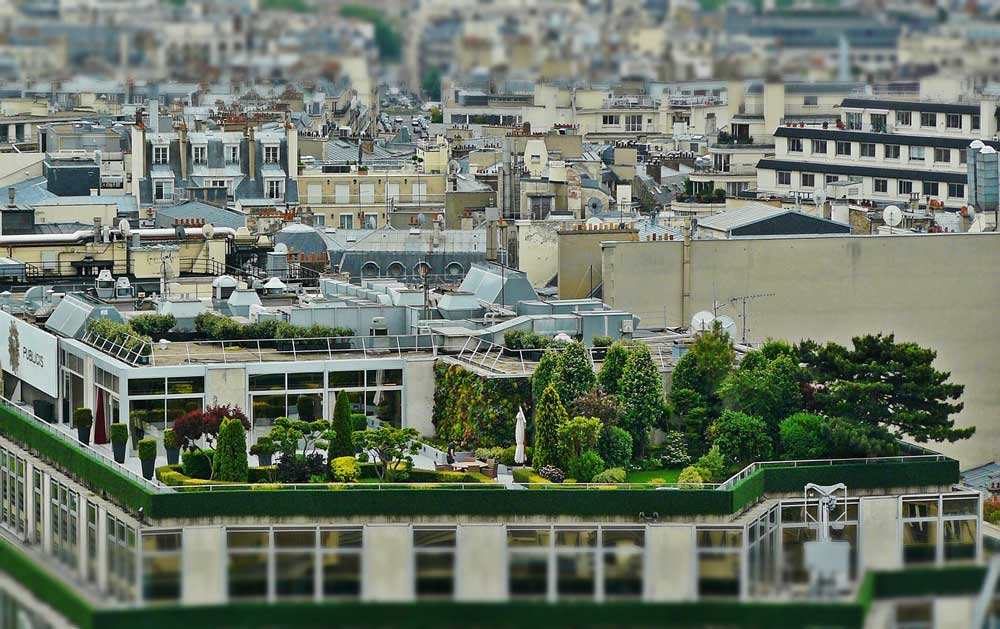
Plants are usually considered for their beauty and aesthetic qualities, but plants are able to perform other functions within the landscape as well. Consideration should be given to the function of the plant, in other words – what do you want that particular plant to do? Screening? Provide shade? Stabilise a slope? Provide nectar for the bees?
Once the decision about plant aesthetic and function has been made, check that the growing conditions are suitable. Site analysis, including sun and shade areas, dry and wet areas, soil type and pH reading, wind direction and spatial dimensions need to be researched. Once all this information is known it will help to guide plant choice. Remember, if the soil, climate or aspect is not producing favourable growing conditions for a plant, it will not thrive.
Well planned planting can provide windbreaks, anti-vandalism barriers, erosion control, slope stabilisation, wildlife habitat, visual interest, climatic control and noise alleviation. Plants can also be used to provide and enhance educational and sensory environments.
Climate - plants create micro-climates by affecting humidity, air temperature and air movement.
Visual - plants can provide colour, partial or full screening, privacy, enclosures and overhead cover.
Physical - plants can control movement through a site, providing barriers by dense planting and implied barriers to separate areas.
Erosion and water - plants prevent soil erosion from both wind and water, and plants also prevent the soil from drying out too quickly.
Noise and colour - a thickly planted barrier between the site and the source of noise or odour will reduce the effects.
Utilitarian functions, such as growing plants for cut flowers, fruit or vegetables, need not detract from a well-planned planted border, making use of the decorative qualities of fruit, vegetables and herbs, which can be integrated into the overall design.
Borders have important functions to perform beyond being a site for artistic or botanical plantings. Some dictionaries define garden borders as an ornament that softens a boundary; borders are traditionally found where a wall meets the ground or where two properties meet. Borders can offer backdrop or a ‘living wallpaper’, helping to create a stimulating ambience to a garden.
When designing a planted border, the location must be carefully considered; a city, town or suburban garden’s border may be very different to a rural garden. In a city, planting may be used to screen the garden from its neighbours, whilst rural planting may be used to enhance their surroundings and create a border that blends in with the views beyond the garden.
Garden ‘borders’ do not always need to be alongside boundaries - they can be used to create interest or screening within a garden too.
3. Microclimates
Microclimates can be created by careful planning of planting.
Dense planting and consideration to light and shade naturally work together to create a shaded, cooler, moist site for plants that will thrive in this environment.
Deciduous trees, planted as a screen to provide shade from the sun in summer, allow light to penetrate through the bare branches through the winter months and can provide a cool (but not cold) environment throughout the year.
Large and densely planted shrubs can act as a wind break, reducing the wind's velocity, especially if planted against the prevailing wind, creating a sheltered area that is not constantly cooled by wind force. Evergreen screens can provide a shelter from wind and provide shade to an area throughout the year.
Planting against a south facing wall, or hedge, will create a micro-climate. The wall will absorb and radiate heat, and provide wind shelter.
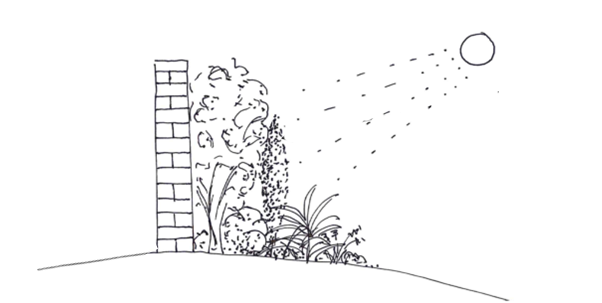
Amber Crowley / public domain
Planting tall plants to provide shelter from the prevailing winds, protects the plants in the foreground of a border.
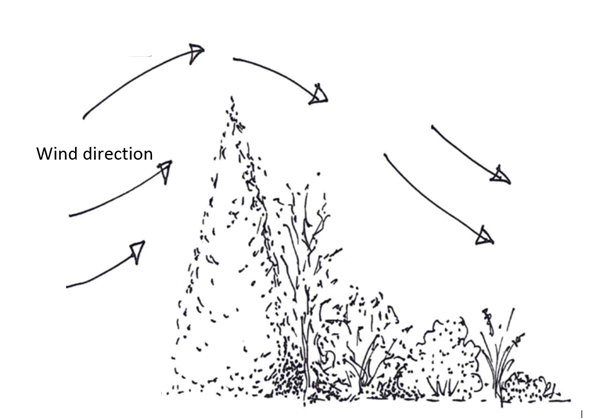
Amber Crowley / public domain
High levels of sunlight to a given area can be reduced by planting that provides dappled shade.
Sheltered areas that are warmer than the surrounding area can be created.
A canopy of plants can create an area that protects plants grown underneath from frosts.
4. Seasons of interest
To create year-round interest, knowledge of which plants look good during which season is key.
Winter
Borders in winter can have form, texture and interest; evergreen shrubs can be used to enhance a winter border. Frosts that softly coat evergreen plants can create a pleasing effect on crisp winter mornings.

Spring
Spring flowering bulbs add a splash of colour early in the season, even before the leaves on the trees have emerged.
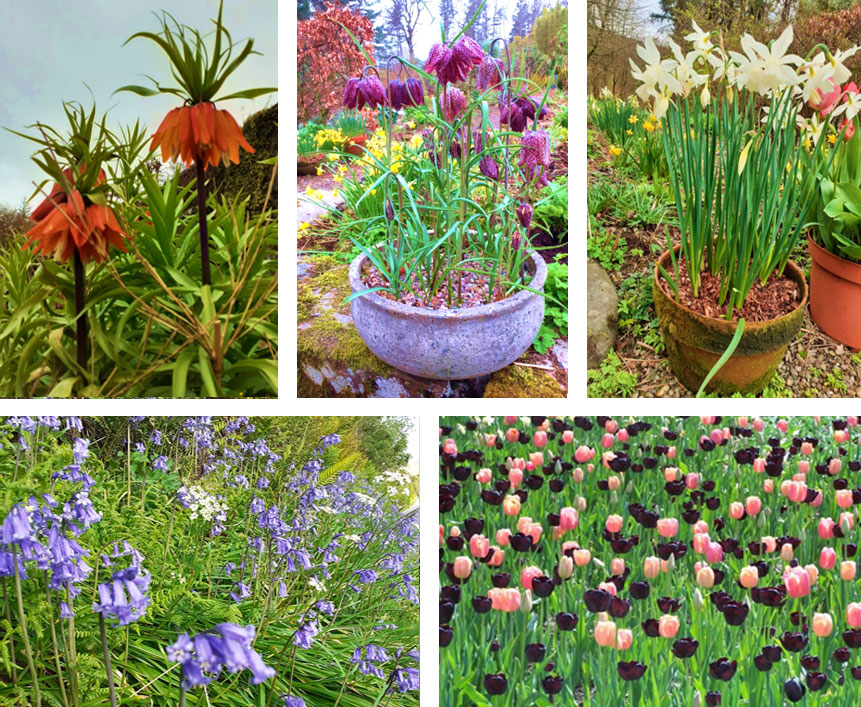
And spring flowering trees and shrubs such as cherry trees and Rhododendrons add valuable colour to the season.

Summer
Summer is a season with plenty of interest with an abundance of flower and foliage colours.
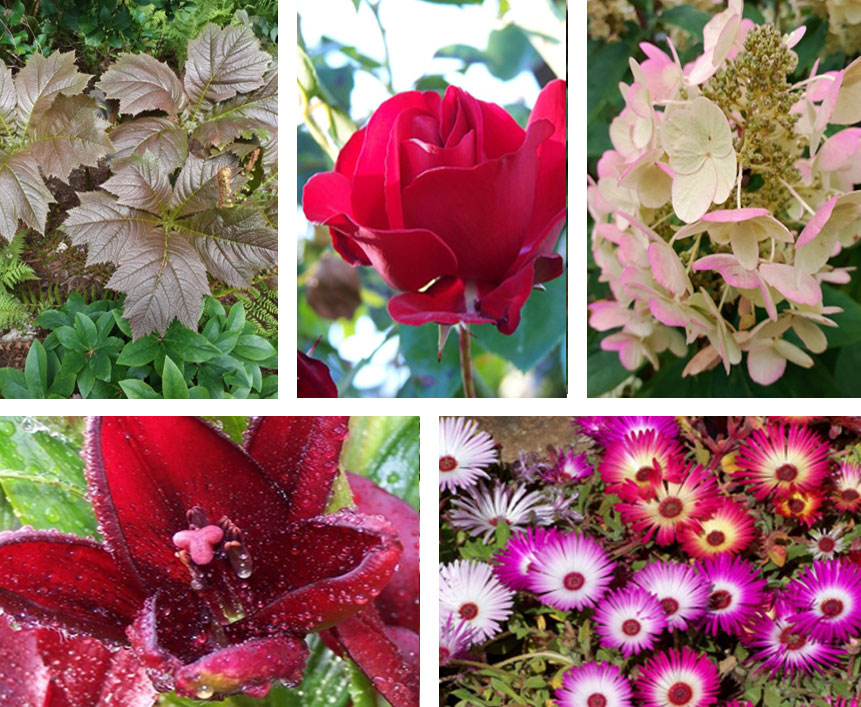
Autumn
Autumn is characterised by the fading colours of flowers, fruit ripening, seed heads forming and the warm colours of autumn leaves. Including plants, such as Acers, that give a good display in Autumn, adds interest to this season.
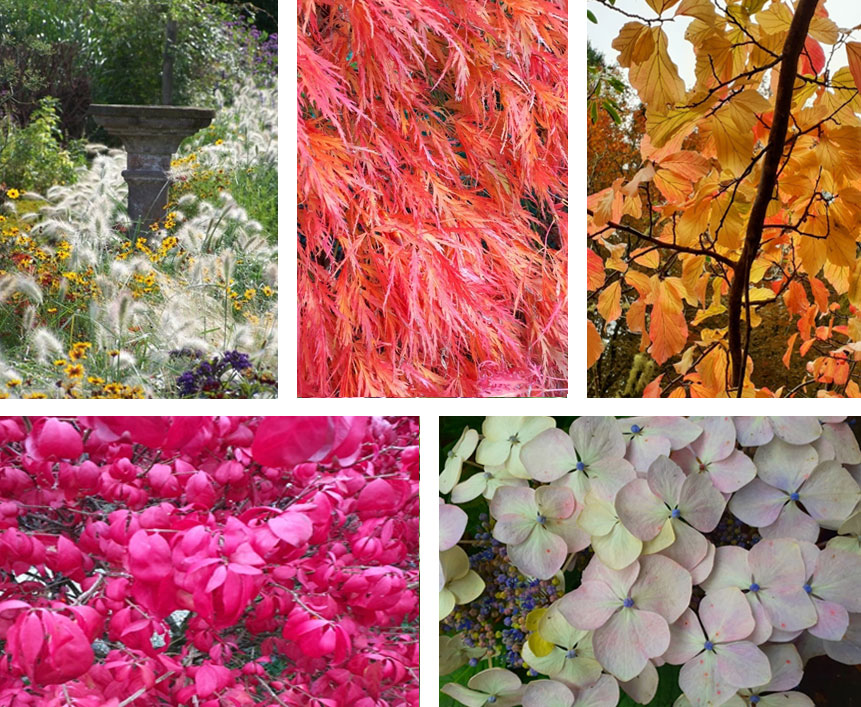
Choose 3 plants for each season (winter, spring, summer and autumn) which would add interest to that season. Consider not only flowers but also using evergreen plants and plants with interesting foliage, stems or fruit.
5. Planting style
Gardens look more intentionally ‘designed’ if a single planting style is chosen, rather than using a mix of all types of plants jumbled together.
Do internet image searches for each of the following planting styles and make a few notes for each style about the characteristics of the plants used to create that style, for example, 'lots of clipped topiary used', or 'lots of mixed colours used', or 'soft textures used'.
- Cottage garden planting
- Formal planting
- Prairie planting
- Jungle planting
- Wildlife planting
6. Plant functions
Erosion and water control
Plants prevent soil erosion from both wind and water, and they also prevent the soil from drying out too quickly. Without plant cover, erosion levels are high; bare soil is susceptible to being swept into rivers and carried away from the land into the sea. Plant roots bind soil particles together which reduces erosion.
List three plants which would be suitable to plant on a steep bank to reduce erosion of the soil.
Noise and odour
A thickly planted barrier between the site and the source of noise or odour will reduce the effects. If the site is subject to air pollution, there are some species of plant that are more tolerant than others, especially if the soil has been well prepared before planting. Evergreen trees and shrubs will provide effective year-round screening. A wide and densely planted area between the site and either an industrial facility or a busy main road, will lessen any noise, pollution and smell from passing traffic, or an industrial activity.
List 3 evergreen hedging plants which would create a dense hedge to reduce noise and odour from a road.
7. Use of colour

The colour wheel
Made up of the three primary colours (red, yellow and blue) and the three secondary colours (green, purple and orange), the colour wheel provides, at a glance, the foundation for colours that are complimentary, or contrasting, to each other.
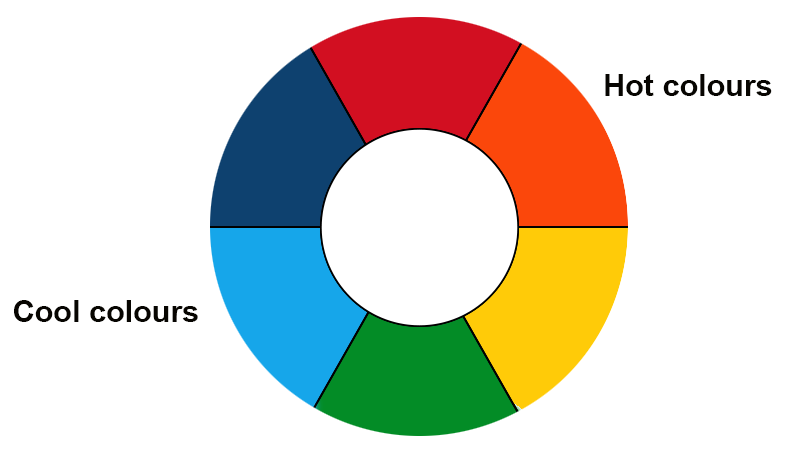
Contrasting (opposite each other on the wheel) colours will create an exciting planting scheme.
orange and blue

yellow and purple

red and green

Adjacent (next to each other on the wheel) colours will create a more subtle colour combination.
blue and purple

yellow and orange

red and orange

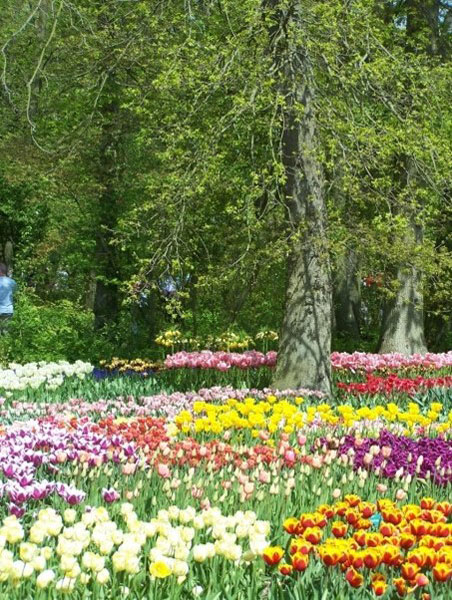
Amber Crowley / public domain
In this planting scheme contrasting colours have been used for a bright and bold display.

Amber Crowley / public domain
This scheme has been limited to the cool colours – mainly blue and white, which creates a calm and peaceful atmosphere.
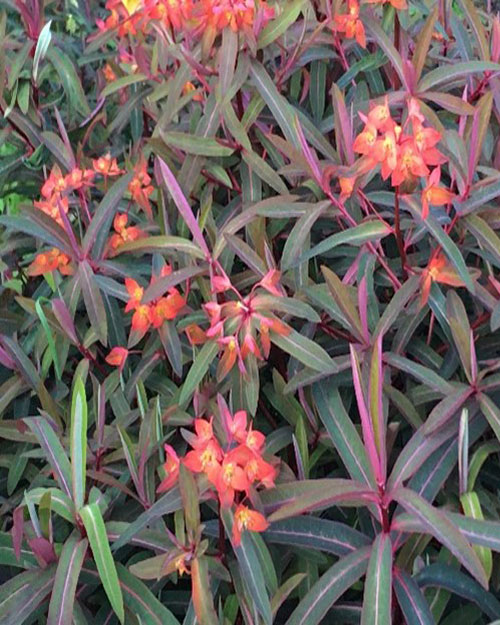
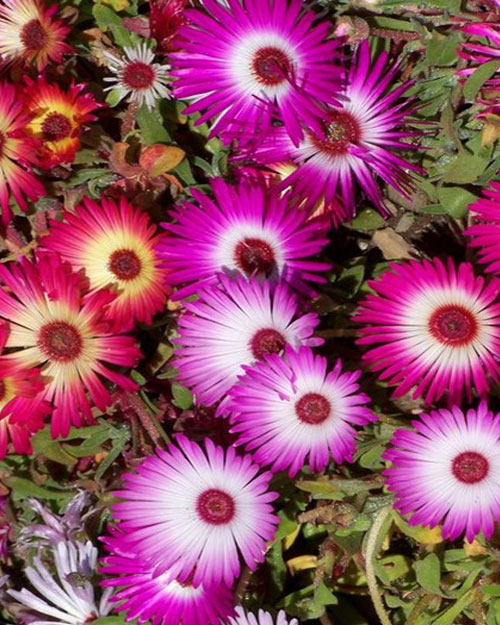
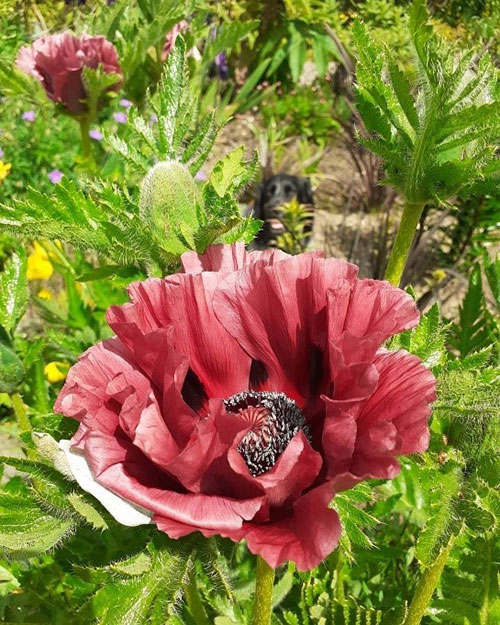
Amber Crowley / public domain
The warm, or hot, side of the colour wheel (reds, yellows, oranges and warmer purples) gives a hot, sunny and vibrant look to the garden.
Make a list of 6 plants which would grow together in a sunny border in a hot planting palette (reds, oranges, yellows and warm purples).
Make a list of 6 plants which would grow together in a semi-shade border in a cool planting palette (blues, whites, greens and cool purples).
8. Use of texture
The leaves, flowers and stems of a plant give it texture.
Leaf shape gives interest and the leaf itself may be either hard and glossy or soft and matt giving further interest. Some plants are chosen for their leaf shape and leaf interest alone. Some leaves are soft and downy and some are rough and hairy. Spiky leaves have a texture of rough edges and sharp points compared to rounded leaves that have a texture that is soft and uniform. Many leaves have an underside that is different to the top surface and this adds another level of texture, especially when the wind is strong enough to blow the plant so that the underside is visible.
All textures are of great use when considering planting design, as the texture is both visual and tactile. Tactile planting for a sensory garden is of utmost importance alongside fragrance, where people are encouraged to touch the plants.
Plants with soft and fluffy textures look great for prairie planting, cottage gardens and informal gardens:


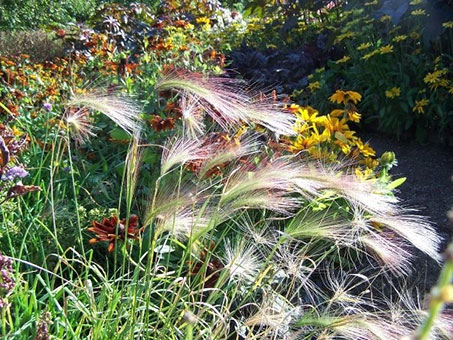
Amber Crowley / public domain
Plants with large leaves have a great texture for jungle style planting:


Amber Crowley / public domain
Do an internet image search for the following types of garden planting style, paying particular attention to the texture of the plants used within them:
- Formal garden planting
- Architectural garden planting
- Prairie garden planting
9. Selecting plants for planting design
The first consideration when selecting plants is to the overall effect required for the planting design: options could include informal and naturalistic, or neat and tidy; cool and restrained, or bright and cheerful.
Deciding early on what focal points are required within the design can then dictate the choice of focal plants, secondary planting and fillers. The planted border will require plants of varied size to add interest, this prevents monotony; if all plants are the same size the border will appear flat.
For year-round interest, maybe include some strategically sited evergreen plants to give structure to the border. Also, try combining plants with different growth habits, for example carpeting the ground below deciduous shrubs with bulbs creates two seasonal interests, spring and summer.
When you are making a list of plants that you think will look good together, note down the information relating to each plant such as height, width, colour, seasonal interest, form and texture.
It is important to avoid a collection of plants that have been chosen for their individual characteristics alone and when planted in a border do not relate to their neighbour.
Select a plant
What growing conditions does the plant require? - Light or shade? Hardy? Dry or moist soil? Acid or alkaline soil?
Is the plant compatible with the chosen colour scheme? Does it have an attractive scent? - Is it structural, having interesting form, texture or foliage? Will it be a key plant to your design? Will it be a secondary plant to your design? Will it be a filler plant?
What size will it be when fully matured? - What height? What width? Will the plant's mature size compliment your design?
Is it available? Is it affordable?
Consider the following, to help in listing objectives for a planting design:
Balance: The composition and effect is pleasing to the eye and presents a complete picture.
Proportion: The relationship between plants and their neighbours is in scale with one another.
Rhythm: Create a pattern within the planting design, repetition may help balance and will lead the eye along the border.
Emphasis: Create a focal point, or frame an area, by introducing key plants. Ensure that the border has interest all year round.
Unity and context: All elements of the planting design fit together as a whole.
Also consider:
Soil: Know what type of soil (clay, sand or loam) and its condition, whether acid, alkaline, good or bad drainage, healthy or lacking in nutrients.
Shade and/or sun: Note the aspect of the area and existing structures that may cast shade over the area. Note which plants prefer full sun, half shade or shade.
Seasonality of chosen plants: Know in which season(s) the plant offers the most interest.
Size: Research and record mature growth size of individual plants. Consider the plant's form as well as size in the design.
Colour: Note what colour the plant will bring to the design, and during which season it occurs.
Plants that are seen in gardens today are from far flung corners of the world, therefore detail of the soil type and the climatic conditions in which the plant likes to grow is vital information; it makes all the difference knowing if the plant will thrive in its proposed planting place.
10. Conclusion and next steps
Conclusion and next steps (YouTube, 0:54)